
A guide to pairing wine with different types of food
Welcome to the wonderful world of wine and food pairing! If you're a foodie or a wine lover (or both!), you probably know that a great meal is always better with the right wine. But with so many wines and food options available, it can be overwhelming to know where to start. That's where this guide comes in - to help you navigate the often complex world of wine and food pairing.
Now, some people might think that pairing wine with food is just a matter of personal preference, and to some extent, that's true. After all, everyone has their own unique taste preferences. But there are some general guidelines you can follow that will help you make informed choices when it comes to pairing wine and food.
In this guide, we'll be covering the basics of wine and food pairing, as well as specific recommendations for pairing different types of wine with different types of food. We'll explore the unique characteristics of different wines, such as reds, whites, rosés, and sparkling wines, and suggest food options that complement and enhance the flavors of each.
But don't worry, this won't be a dry, technical read. We'll keep things light and fun, with a touch of humor and plenty of practical tips that you can use to impress your dinner guests. So, whether you're planning a special occasion or just looking for some inspiration for your next weeknight meal, this guide is for you. Get ready to discover some new favorite pairings and take your wine and food game to the next level!
Understanding the Basics of Wine and Food Pairing
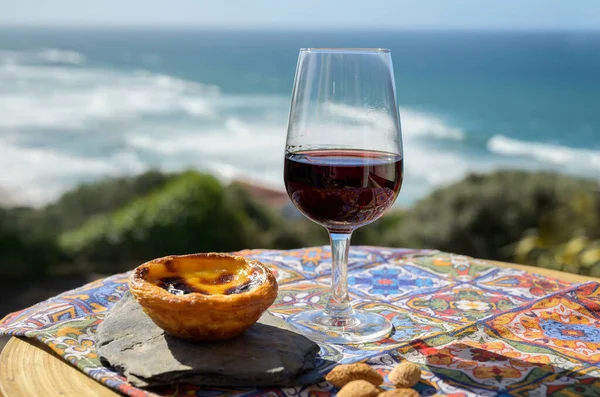
Before diving into specific recommendations for pairing different types of wine with different types of food, it's important to understand some basic principles of wine and food pairing. While some of these guidelines might seem overly technical or complex, they're actually quite simple to understand and can help you make better decisions when it comes to choosing the right wine for your meal.
First, it's important to consider the intensity of both the food and the wine. Generally speaking, lighter wines pair best with lighter dishes, while fuller-bodied wines work well with heavier, more flavorful foods. This means that a light white wine, such as a Pinot Grigio, would pair well with a light seafood dish or a salad, while a bold red wine, such as a Cabernet Sauvignon, would pair better with a hearty steak or a rich pasta dish.
Another important factor to consider is acidity. Wines with high acidity, such as Sauvignon Blanc or Chianti, pair well with acidic or tangy dishes, as the acidity in the wine helps to balance out the flavors in the food. On the other hand, low-acid wines, such as Merlot or Shiraz, pair better with dishes that are less acidic or more mellow.
When pairing wine with spicy foods, it's important to choose a wine that can handle the heat. Off-dry whites, such as Riesling or Gewürztraminer, pair well with spicy dishes, as the sweetness in the wine helps to balance out the heat. However, if you prefer a red wine with your spicy meal, a lighter-bodied red, such as Pinot Noir or Zinfandel, would work well.
Finally, it's important to consider the flavor profile of both the wine and the food. For example, a wine with a fruity flavor, such as a Chardonnay, pairs well with dishes that have a fruity or sweet flavor profile, while a wine with earthy or savory flavors, such as a Syrah, pairs well with richer, more savory dishes.
By keeping these basic principles in mind, you can make informed decisions when it comes to pairing wine and food, and create unforgettable meals that will impress your guests and your taste buds!
Pairing Red Wines with Food

When it comes to pairing red wine with food, there are a few general guidelines to keep in mind. As mentioned earlier, the intensity and flavor profile of both the wine and the food should be taken into account, as well as the tannin levels and acidity of the wine.
One classic pairing for red wine is with red meat, such as beef or lamb. Fuller-bodied red wines, such as Cabernet Sauvignon or Merlot, pair well with hearty meat dishes, while lighter-bodied reds, such as Pinot Noir, work well with leaner meats such as pork or poultry. Additionally, a medium-bodied red such as a Chianti can pair well with tomato-based pasta dishes, thanks to the wine's acidity.
If you're pairing red wine with cheese, a good rule of thumb is to pair lighter reds with lighter cheeses, and fuller-bodied reds with more pungent or aged cheeses. For example, a light red such as a Beaujolais pairs well with a creamy Brie, while a bold red such as a Zinfandel pairs well with a sharp cheddar.
When it comes to spicy food, as mentioned earlier, a lighter-bodied red such as Pinot Noir can help balance out the heat in the dish. Additionally, red wines with fruity or slightly sweet flavor profiles, such as a Grenache or a Zinfandel, can pair well with spicy dishes, as the sweetness helps balance out the heat.
If you're looking to pair red wine with seafood, there are a few options to consider. Lighter-bodied reds, such as a Beaujolais or a Pinot Noir, can pair well with seafood dishes that feature tomato-based sauces or a bit of spice.
Pairing White Wines with Food
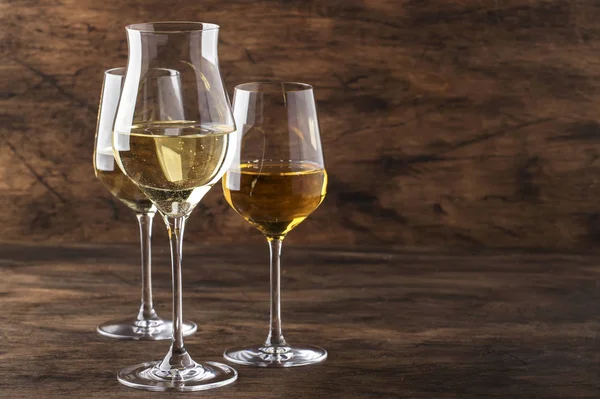
Pairing white wine with food can be just as nuanced as pairing red wine. As with red wine, it's important to consider the intensity and flavor profile of both the wine and the food when making your pairing decision. Additionally, the acidity and sweetness levels of the wine should also be taken into account.
One classic pairing for white wine is with seafood. Light-bodied, acidic white wines such as Sauvignon Blanc or Pinot Grigio pair well with delicate seafood dishes such as oysters or shrimp, while fuller-bodied whites such as Chardonnay pair well with richer seafood dishes like lobster or scallops.
For cheese pairings, lighter white wines such as a crisp white Burgundy or a dry Riesling pair well with fresh, tangy cheeses like goat cheese or feta, while fuller-bodied whites such as an oaked Chardonnay pair well with aged, nutty cheeses like Gouda or Parmesan.
If you're pairing white wine with poultry, a medium-bodied white such as a Viognier can pair well with chicken or turkey, while a full-bodied white such as a white Burgundy can pair well with richer poultry dishes like duck.
When it comes to spicy food, white wines with a touch of sweetness can help balance out the heat in the dish. A slightly sweet Riesling or Gewürztraminer can pair well with spicy Asian or Indian dishes, while a dry, acidic white such as a Sauvignon Blanc can pair well with spicy Mexican or Southwestern cuisine.
Finally, if you're looking to pair white wine with vegetarian or vegan dishes, consider a light-bodied white such as a Pinot Grigio or a Chenin Blanc, which can pair well with lighter fare such as salads or vegetable dishes. A dry rosé can also be a versatile option that pairs well with a wide range of vegetarian dishes.
Pairing Rosé Wines with Food
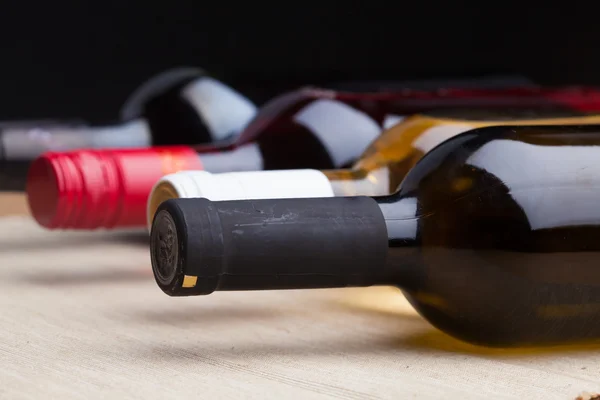
Rosé wines are often associated with warm weather and outdoor dining, but they can actually be quite versatile when it comes to food pairings. These wines are made by allowing the grape skins to macerate with the juice for a short period of time, giving them a light pink color and a refreshing, fruity flavor.
One classic pairing for rosé is with light appetizers or hors d'oeuvres. A dry rosé with notes of strawberry or raspberry can pair well with a cheese board or bruschetta, while a more full-bodied rosé can pair well with heartier appetizers like crostini or charcuterie.
When it comes to pairing rosé with main courses, it's important to consider the intensity and flavor profile of the dish. A light-bodied, acidic rosé can pair well with lighter fare such as salads or seafood, while a fuller-bodied rosé can pair well with heartier dishes such as grilled meats or stews.
For seafood pairings, a dry rosé can pair well with delicate white fish such as sole or cod, while a more full-bodied rosé can pair well with richer seafood dishes such as salmon or tuna.
When pairing rosé with meat dishes, consider the intensity of the dish. Lighter meats such as pork or chicken can pair well with a lighter rosé, while heavier meats such as beef or lamb can pair well with a fuller-bodied rosé.
If you're looking to pair rosé with spicy cuisine, look for a dry, acidic rosé with a touch of sweetness. This can help balance out the heat in the dish and bring out the fruit flavors in the wine.
Finally, if you're looking to pair rosé with cheese, consider a medium-bodied rosé with notes of cherry or watermelon. This can pair well with a wide range of cheeses, from tangy goat cheese to nutty Gouda.
Pairing Sparkling Wines with Food
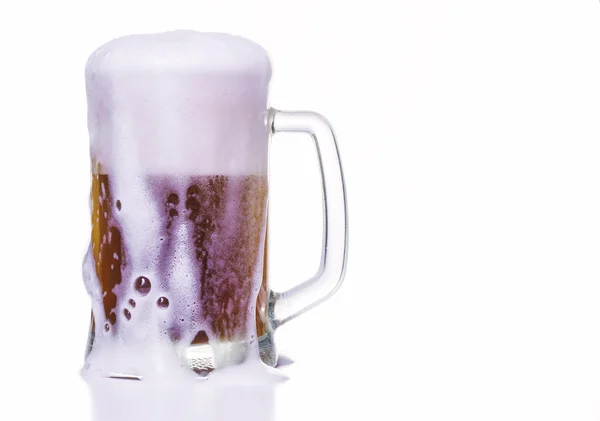
Sparkling wines are a popular choice for celebrations and special occasions, but they can also be a great choice for food pairings. These wines are known for their effervescence and crisp, refreshing taste, which can help to cleanse the palate between bites and highlight the flavors of the food.
One classic pairing for sparkling wine is with seafood. The light, effervescent quality of sparkling wine can complement the delicate flavors of seafood, particularly shellfish such as oysters or crab. A dry, brut-style sparkling wine is a great choice for seafood pairings, as it has a crisp acidity that can cut through the richness of the dish.
Sparkling wine can also pair well with a range of appetizers and small plates, particularly those that are light and refreshing. This includes dishes like salads, sushi, or bruschetta, which can be elevated with the addition of a glass of bubbly. For a more decadent pairing, consider pairing sparkling wine with caviar or foie gras.
When it comes to pairing sparkling wine with main courses, the key is to consider the weight and intensity of the dish. Lighter dishes such as white fish or chicken can pair well with a brut-style sparkling wine, while heavier dishes such as beef or lamb can pair well with a more full-bodied Champagne or sparkling wine.
Sparkling wine can also be a great pairing for spicy cuisine, particularly those with Asian or Indian flavors. The effervescence of the wine can help to balance out the heat in the dish, while the acidity can bring out the flavors of the spices.
Finally, sparkling wine can be a great pairing for desserts. Consider pairing a sweet, fruity sparkling wine with fresh fruit or a light dessert, or a richer, sweeter style with decadent desserts like chocolate cake or crème brûlée.
Overall, the crisp, refreshing qualities of sparkling wine make it a versatile choice for food pairings, and it can be a great way to elevate a range of dishes and make any meal feel like a special occasion.
Pairing Dessert Wines with Food

Pairing dessert wines with food can be a delightful way to end a meal. These sweet and decadent wines come in a range of styles, from late harvest and ice wines to fortified wines like port and sherry. Pairing dessert wines with food can be a little more challenging than pairing other types of wines, as the sweetness of the wine can easily overpower the flavors of the dish. However, when done correctly, the pairing can create a beautiful balance of flavors.
When pairing dessert wines with food, it's important to consider the level of sweetness in both the wine and the dessert. In general, the wine should be at least as sweet as the dessert, if not sweeter. This will help to balance out the flavors and prevent the wine from tasting cloying.
One classic pairing for dessert wines is with cheese. Fortified wines like port and sherry pair particularly well with rich, flavorful cheeses such as blue cheese or aged cheddar. The sweetness of the wine can balance out the saltiness of the cheese and highlight the complex flavors of both.
Dessert wines can also pair well with a range of desserts, particularly those with rich, decadent flavors. A late harvest Riesling, for example, can pair well with a fruit-based dessert like apple pie or peach cobbler. A sweet, fortified wine like a port or a Madeira can be a great pairing for rich, chocolatey desserts like flourless chocolate cake or chocolate truffles.
Another great pairing for dessert wines is with salty or savory foods. The sweetness of the wine can balance out the saltiness of the dish, creating a beautiful contrast of flavors. Consider pairing a sweet, fruity dessert wine with salty nuts or a savory blue cheese tart.
Overall, pairing dessert wines with food can be a fun and delicious way to end a meal. With a little experimentation and some basic knowledge of wine and food pairing, you can create beautiful combinations of flavors that will leave your guests feeling satisfied and impressed.
Regional Pairings

Regional pairings are a popular way to approach wine and food pairing, as different regions often have traditional dishes that are specifically designed to be enjoyed with the wines produced in that region. In many cases, these pairings have evolved over centuries, with local chefs and winemakers refining the perfect combinations of flavors.
For example, in France's Burgundy region, a classic pairing is a rich, earthy red wine like Pinot Noir with dishes like coq au vin or beef bourguignon. The wine's complex flavors complement the rich, savory flavors of the dish, creating a perfect balance.
Similarly, in Italy's Tuscany region, a popular pairing is a bold, full-bodied red wine like Chianti with dishes like pasta with tomato sauce or grilled meats. The wine's acidity can cut through the richness of the sauce or the meat, creating a beautiful harmony of flavors.
In Spain's Rioja region, a popular pairing is a medium-bodied red wine like Tempranillo with dishes like chorizo or paella. The wine's fruit-forward flavors can complement the spicy, smoky flavors of the dish, creating a beautiful contrast.
In the United States, California's Napa Valley region is known for producing rich, full-bodied red wines like Cabernet Sauvignon, which pair well with hearty, flavorful dishes like grilled steak or roasted vegetables.
When it comes to regional pairings, the key is to understand the flavors and characteristics of the wines produced in a particular region, as well as the local cuisine. By pairing the two together, you can create beautiful combinations of flavors that highlight the unique characteristics of both the wine and the food.
Overall, regional pairings can be a fun and educational way to explore the world of wine and food pairing. Whether you're a seasoned wine enthusiast or a curious beginner, there's always something new to discover when it comes to pairing wine with different types of food.
Tips for Pairing Wine and Food 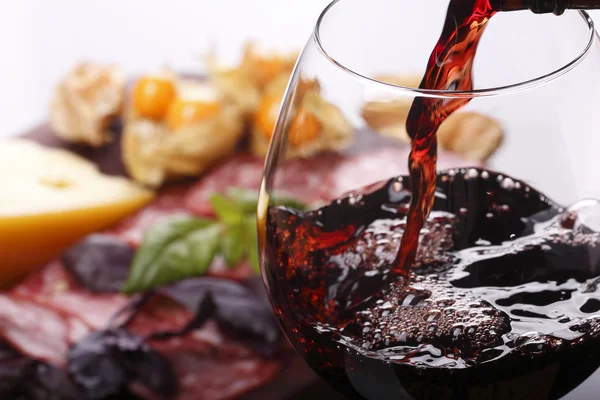

Pairing wine with food can seem like a daunting task, but it doesn't have to be. With a few tips and tricks, you can create beautiful combinations of flavors that elevate your dining experience. Here are some tips for pairing wine and food:
Consider the weight of the food and the wine: One of the most important things to consider when pairing wine with food is the weight of both the food and the wine. Heavy, rich dishes like steak or lasagna pair well with full-bodied red wines, while lighter dishes like fish or salads pair better with lighter, crisper white wines.
Look for complementary flavors: When pairing wine and food, look for flavors that complement each other. For example, a crisp Sauvignon Blanc pairs well with a citrusy salad, while a spicy Shiraz pairs well with a dish that has a bit of heat.
Think about acidity: Acidity in both wine and food can help to balance out rich, heavy dishes. For example, a high-acid wine like a Riesling pairs well with rich, creamy dishes like Alfredo pasta.
Consider the tannins: Tannins are naturally occurring compounds found in red wines that can create a drying sensation in the mouth. When pairing wine and food, consider the tannins in the wine and look for dishes that can stand up to them. For example, a tannic Cabernet Sauvignon pairs well with a fatty cut of steak.
Don't be afraid to experiment: At the end of the day, wine and food pairing is subjective, and what works for one person may not work for another. Don't be afraid to experiment with different pairings to find what works best for your palate.
Don't forget about dessert: When it comes to pairing wine with dessert, look for a wine that is slightly sweeter than the dessert. For example, a sweet Riesling pairs well with a fruit tart, while a Port pairs well with a rich chocolate dessert.
By following these tips, you can create beautiful, flavorful combinations of wine and food that will enhance your dining experience. Whether you're a seasoned wine enthusiast or a curious beginner, there's always something new to discover when it comes to pairing wine with different types of food.
Conclusion
In conclusion, pairing wine with food is an art that can be learned and perfected over time. The right pairing can enhance the flavors of both the wine and the food, creating a harmonious and enjoyable dining experience.
To achieve the best pairing, it's important to consider the basic elements of both the wine and the dish, such as the acidity, sweetness, and weight. Red wines generally pair well with bold flavors and red meat, while white wines are often paired with lighter dishes and fish. Rosé wines can be paired with a variety of foods, including spicy dishes and grilled meats, while sparkling wines are often served with appetizers and desserts.
It's also helpful to consider the regional origin of the wine and food, as many regional pairings have been tried and tested over time. And, of course, personal taste is also a factor in wine and food pairing. Experimenting with different pairings and finding what works best for your palate is key.
Remember, pairing wine with food should be a fun and enjoyable experience. So don't be afraid to try new things and explore different flavor combinations. With a little knowledge and experimentation, you can become a master of wine and food pairing and take your dining experiences to the next level. Cheers to that!
 Reviewed by jadan
on
February 22, 2023
Rating:
Reviewed by jadan
on
February 22, 2023
Rating:




No comments: